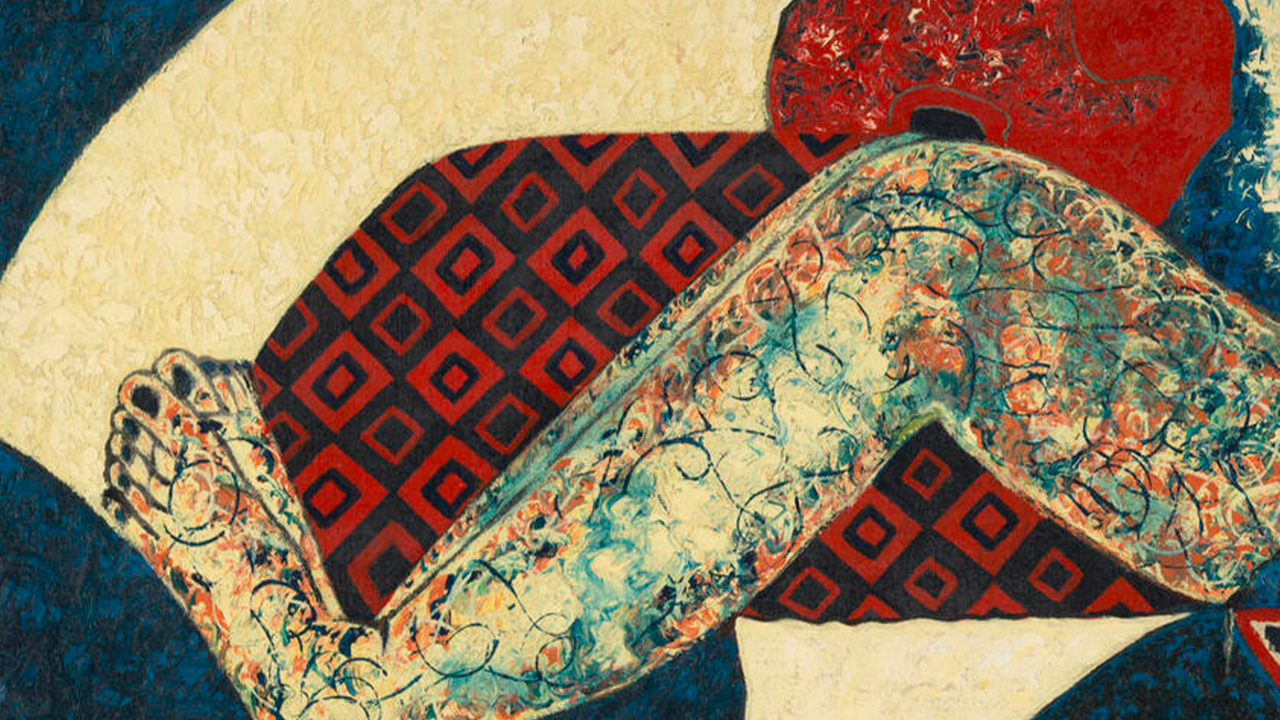Heartland
Van Abbemuseum / Muziekcentrum Frits Philips, Eindhoven, the Netherlands
Van Abbemuseum / Muziekcentrum Frits Philips, Eindhoven, the Netherlands

It’s a tall order, surveying the art and music of a region that’s as indefinable as it is big. The American ‘Heartland’ that’s posited in this show – an area that roughly follows the Mississippi river from New Orleans up to Minneapolis, and is home to cities such as Kansas City, Detroit and Chicago, among others – is more than 20 times the size of the Netherlands. But this multidisciplinary show tries admirably to reconnoitre this territory, drawing upon works by about two dozen international artists and collectives, plus ancillary musical performances, lectures and residency programmes.
The show is meant as a corrective to an image of rural America that’s largely dominated by clichés both good (individualistic, honest, hard-working, wholesome, pastoral, raw) and bad (closed, incurious, unsophisticated, fundamentalist). It also aims to redress the lack of attention that the art world pays to this ‘third coast’; most of the American art works in the Van Abbemuseum’s own collection, for example, are from either New York or California. But grouping works based on geography, especially a vague one, runs the risk of creating spurious connections. And the culture of the area in question – alternately known as the Midwest, the Great Plains or flyover territory – isn’t quite as under-represented abroad as the exhibition-makers would have it, especially in terms of music: the Heartland has given us Elvis Presley, Bob Dylan and Johnny Cash, plus more recent stars like Prince, Nine Inch Nails and Marilyn Manson; Detroit alone was the birthplace of both Motown and techno. And the Heartland’s cities have also been the subjects of countless films.
Still, ‘Heartland’ does an admirable job of connecting the artistic dots between disparate regions, both rural and urban, and finding works that strike resonant notes on many levels. A good example is Michael Rakowitz’s Dull Roar (2005), an inflatable house that endlessly collapses and re-inflates. While the show was clearly planned to coincide with the US presidential elections, its organizers couldn’t have predicted the area’s current housing crisis; in especially hard-hit Detroit, for example, you can now buy a house for a thousand dollars. But Dull Roar is actually based on a failed Utopian housing project called Pruitt-Igoe, built in St Louis, Missouri, in the 1950s and then very publicly demolished in 1972. Even more poignantly, Pruitt-Igoe’s architect, Minoru Yamasaki, was also the architect of the World Trade Center’s Twin Towers.
But other works here, while brilliant on their own, actually serve to reinforce, rather than debunk, many of the clichés of backwardness mentioned above. The eerie portraits by Magnum photographer Alec Soth, for example, are what you might expect to see in a catalogue of archetypal rural oddballs. In his series ‘Sleeping by the Mississippi’ (2002), we meet ‘Patrick’, a small man in an oversize suit standing outside a debris-strewn church in Louisiana; with his palm leaf and well-thumbed Bible, he resembles an extra from a movie by the Coen Brothers. And ‘Charles’, a weird-beard in overalls and John Lennon glasses, holds onto model airplanes amidst cinderblocks and plastic tarps, every bit the rugged outsider we’ve come to associate with rural frontiers. Likewise, Scott Hocking’s melancholic series ‘Detroit’ (2008) depicts the Motor City in disrepair – cracked pavements, desolate streets at night, abandoned cars and parking lots.
The works that offer a more upbeat take on the American Heartland tend to have a green sheen, focusing on sustainable forms of creative renewal that will help the region survive. Marjetica Potrc’s New Orleans: Shotgun House with Rainwater-Harvesting Tank (2008) is a prototype structure that re-imagines the traditional shotgun house – a simple architectural style common to the region at the beginning of the 20th century – as an ecological exemplar, newly able to collect solar power and rainwater. Similarly optimistic are the Museum Benches (2008) built by the Detroit Tree of Heaven Woodshop, a collective that works with wood from the locally ubiquitous ailanthus tree; it’s known in Chinese as the Tree of Heaven, but locally as the ‘ghetto palm’ due to its penchant for springing up in abandoned lots and factories. The tree is an apt metaphor for resilience in the face of adversity, as is the raft made from recycled materials that the Miss Rockaway Armada collective sailed down the Mississippi, like the fictitious Huckleberry Finn and Jim about a century and a half ago. At the show’s opening, a shored-up version of the raft was said to be crossing the Atlantic on its way to Eindhoven, a city that shares a kinship with the American Heartland: it too lies outside the Dutch art world centres of Rotterdam and Amsterdam, and is likewise characterized by a certain conservatism, traditionalism and un-hipness. The Heartland – and not just the American one – is more a state of mind than a place on the map.
























